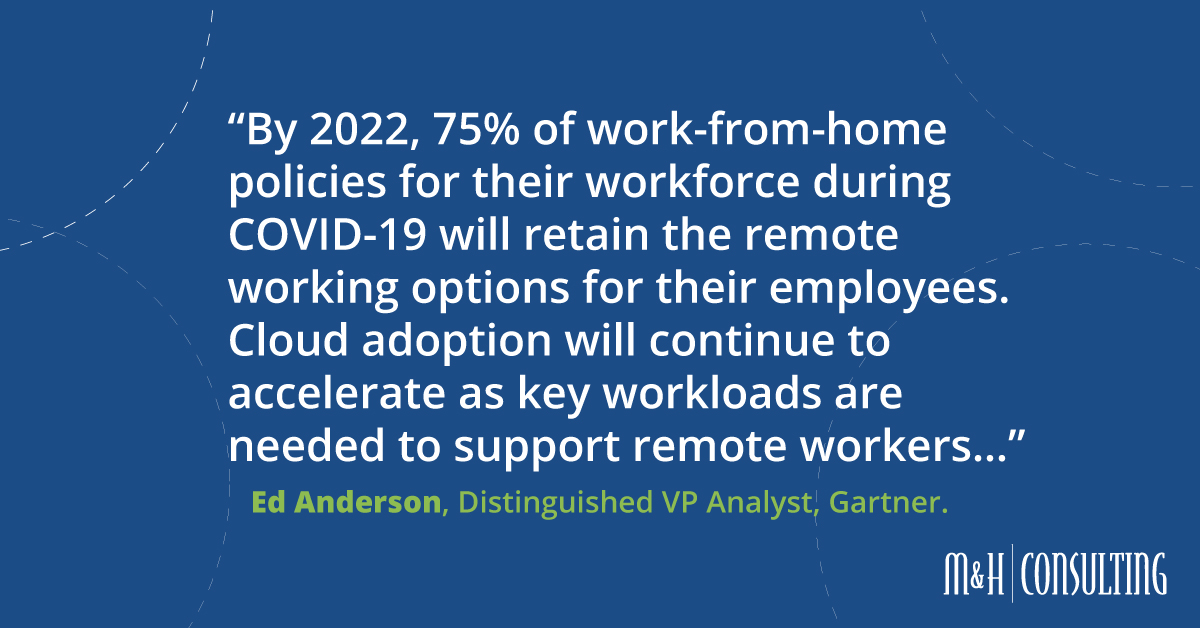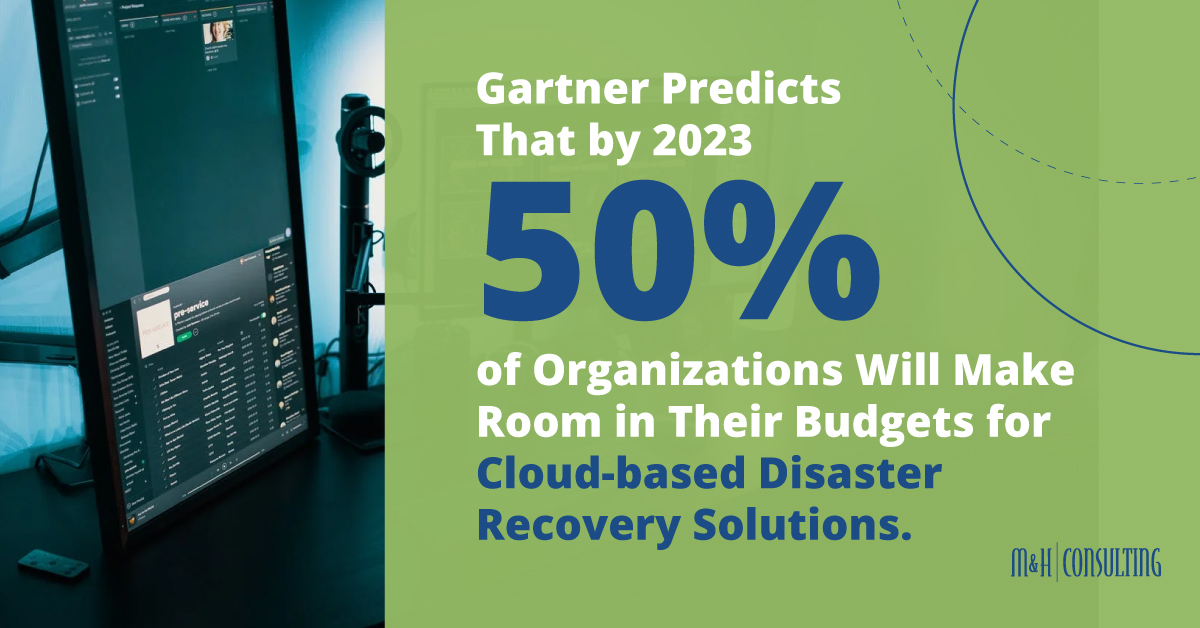Now more than ever, cloud services have become invaluable tools. As we witness the business landscape and working societies shift before our very eyes, it’s important that all businesses (yes, that means all businesses, from your Mom & Pop markets to tech corporations) remain adaptable and open-minded to all technological advancements.
Cloud computing and storage solutions are examples of technologies that are increasingly moving from optional to necessary when trying to ensure business success. While it may seem like we’re returning to “normalcy,” in actuality, we’re most likely entering a new post-COVID world, especially when it comes to business, technology, and how they interact with each other.

As stated by Ed Anderson, Distinguished VP Analyst at Gartner, “by 2022, 75% of work-from-home policies for their workforce during COVID-19 will retain the remote working options for their employees. Cloud adoption will continue to accelerate as key workloads are needed to support remote workers and maintain data center operations.”
So, today, let’s explore workloads that you should, at least the very least, consider moving into the cloud. Cloud-based technologies have helped companies large and small streamline various workflows, especially when many are still working from home.
Content Creation And Management
Create The Best Content In The Cloud
It’s been known and accepted for a while that one of the simplest, yet most impactful, ways of marketing your business is through content creation. We live in a digital world where content is key and creating engaging, thoughtful, and useful content reaches new potential audiences, customers, and clients.
Many organizations have already moved to cloud-based services for most of their content creation. Accessible tools, such as Microsoft Office 365 and Google G Suite are just a few basic cloud-based applications that enable content creators to access their work from anywhere in the world via their work or personal accounts.
Canva is also another great example of content creation tools, this one being a photoshop-Esque graphic creator, that utilizes cloud-based technologies to provide services for users. Cloud-based content creation platforms offer creators a chance to work remotely, edit and create on the fly, and the option to pull or restructure content as necessary, when necessary.
Cloud-Based Collaboration
One of the most exciting aspects of cloud-based content creation is the unprecedented freedom for collaboration opportunities. A simple share of a document enables real-time collaboration and editing, allowing you and your team to hop into a document and create together.
This provides for a more streamlined collaboration process, where creators, partners, and clients are encouraged to spend more time working together on the perfect content instead of tedious troubleshooting and document hunting.
Remote Workstations And Virtual Desktop Management
Upgrading Remote Desktop Management
Cloud-based technology has enabled more stable, scalable control points than traditional and outdated data-center-based solutions. Remote workstations and virtual desktop management capabilities allow team and technology leaders, such as CIOs and IT administrators, to virtually push necessary platform updates to their employees on a large scale from a central location. This saves countless hours of time, energy, and tech management.
Another Piece To The Remote Work Puzzle
Similar to content creation platforms, remote workstations or virtual desktops also allow employees to complete their tasks from anywhere, in and out of the office. The virtualization of workplace desktops allows organizations to separate operating systems from their physical locations and devices, meaning that employees have access to their work-ready desktop interface and applications even while away from the office.
Disaster Recovery And Business Continuity Solutions

Quickly Recovery From IT Disasters
Gartner predicts that by 2023, 50% of organizations across the world will make room in their budgets for cloud-based disaster recovery solutions.
“The cost-effectiveness of using a pay-per-use environment to support unexpected failover requirements that cloud-based disaster recovery solutions offer is sought after in current times,” Anderson said.
Cloud-based disaster recovery services allow your business to back up and protect valuable assets without costly data storage solutions. In the event of data loss due to a security breach, natural disaster, or human error, your priority assets will be safely backed up within the public cloud or dedicated providers.
Keep Your Business In The Cloud And Ensure Its Continuity
In light of the disasters mentioned above, you’ll want to make sure that your business can continue. Once you have targeted and resolved the reasons behind data loss, cloud backup and storage solutions allow you to return those assets and data to your local data center, or you can simply continue working from your cloud provider.
This ensures the continuity of your business, protecting you and your employees’ livelihoods even during and after disasters and catastrophic events. Having a disaster recovery and business continuity plan, regardless of methods, also helps protect your overall business reputation. The time for should is over when it comes to recovery plans, you need to form a plan now.
Expand Your Reach And Become A Global Competitor
In a period of unprecedented interconnectedness, businesses all over the world have the opportunity to become global competitors as technological advances and services expand our reach daily. This reach isn’t exclusive to large organizations and firms anymore, as cloud-based technologies have allowed every business, from self-run entrepreneurs to corner thrift stores, to get their products and services in front of new audiences (and, on a global scale if desired).
Mark Schlesinger of Forbes explains that “large firms that ignore or are slow to embrace the opportunities of the public cloud also face a profound risk in giving more nimble competitors, including challenger banks, a foothold from which they could snatch business. The immense scale of the cloud gives competitors the ability to strike from any part of the world.”
Don’t let opportunities pass you by! The cloud is here to stay and unlike many new and complicated business-grade technologies, it’s almost absurdly accessible for all firms, companies, and organizations. If you and your company are thinking about migrating to the cloud, be sure to reach out to M&H Consulting, and get you set up and ready to go.
Categorised in: Cloud Services, Digital Age, Google Drive, Transformation
